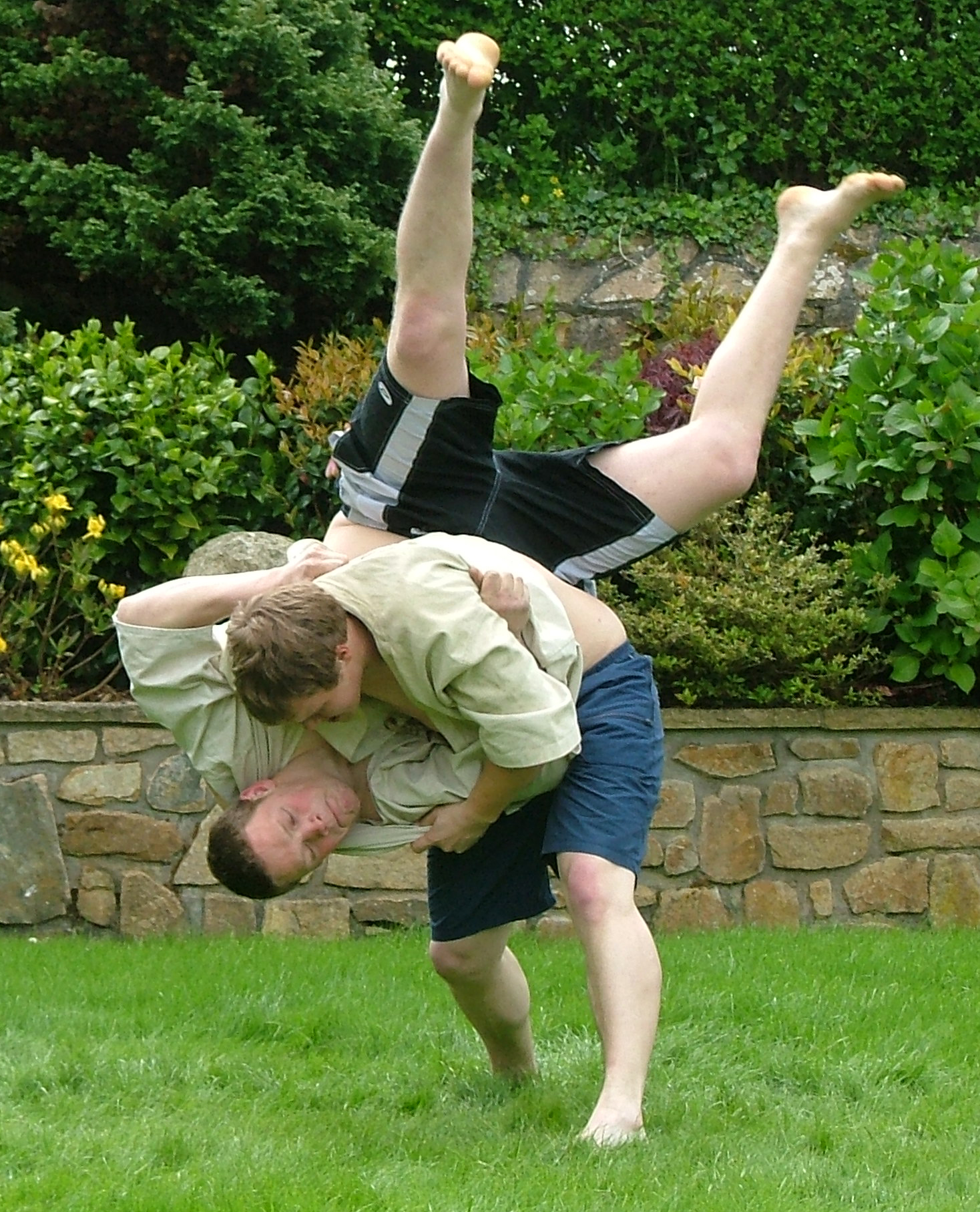
Cornish wrestling
Cornish wrestling (Cornish: Omdowl Kernewek[1]) is a form of wrestling that has been established in Cornwall for many centuries and possibly longer. It is similar to the Breton Gouren wrestling style. It is colloquially known as "wrasslin’"[2][3] in the Cornish dialect of English; historically, this usage is attested by Chaucer,[4] Shakespeare[5] and Drayton.[6]
Focus
The referee is known as a 'stickler',[7] and it is claimed that the popular meaning of the word as a 'pedant' originates from this usage.[8]
Cornish wrestling is a national sport of Cornwall, which spread throughout the British Isles and then, along with the Cornish diaspora, to such places as the United States, Australia, Mexico, New Zealand and South Africa.
It has similarities to Devon wrestling but it was reputed to focus less on foot moves and more on throwing.[9]
Introduction to the rules of competition[edit]
The objective of Cornish wrestling is to throw one's opponent and cause them to land as flat as possible on their back. Each of the wrestlers wears a ‘jacket’ of tough make and material, enabling them to better grip their opponent. Grabbing of the opponent's or your own arms, wrists or fingers is forbidden as well as holding below the waist. All holds are to be taken upon the jacket, although the flat of the hand is allowed to be used to push or deflect an opponent.[10][11] No fending is permitted. No force on the throat is permitted. Three sticklers watch and control each bout, keeping score of points.[12]
Four pins are located on the back of a wrestler, two at the shoulders and two just above the buttocks. A wrestler scores points by throwing their opponent onto their back, the number of pins hitting the floor being the number of points scored. If a wrestler manages to score with three or four pins this is called a ‘Back’ and the bout is then finished, with the throwing wrestler as the winner.[13] The sticklers each raise their sticks when they perceive a Back has been achieved. A Back may be awarded by majority, i.e. by two out of the three stickers. If a Back is not awarded, the winner is the wrestler with the most accumulated points within the time limit.[12]
There are two clubs, open to the public, that teach Cornish wrestling, operating in Cornwall.
In addition Cornish wrestling is taught at Devon Celtic Combat which meets on a Wednesday evening at Morice Town Primary Academy, Charlotte St, Plymouth.
The following Senior Championships are fought annually in competitions across the Duchy, overseen by the CWA:
Note that women have held some of the weight based championships.
The following Junior Championships are fought annually in competitions across the Duchy:
Cornish Wrestling at the Royal Cornwall Show[edit]
The Cornish Wrestling Association (CWA) still features annually at the Royal Cornwall Agricultural Show. The Cornish wrestling tent can be found in the Countryside area very near to the west entrance. In the Cornish wrestling tent you will find an impressive display of Cornish wrestling trophies, belts, history, photos, books and DVDs. The wrestlers perform demonstrations of their style in the Countryside ring, usually twice a day for each of the three days of the show. The demonstrations feature most of the throws and moves of the Cornish style and also feature demonstration bouts usually with a variety of wrestlers from youngsters, girls, lightweights and heavyweights.
Outside Cornwall[edit]
Cornish wrestling is Cornwall's oldest sport and as Cornwall's native tradition it has travelled the world to places like Victoria, Australia and Grass Valley, California following the miners and gold rushes.